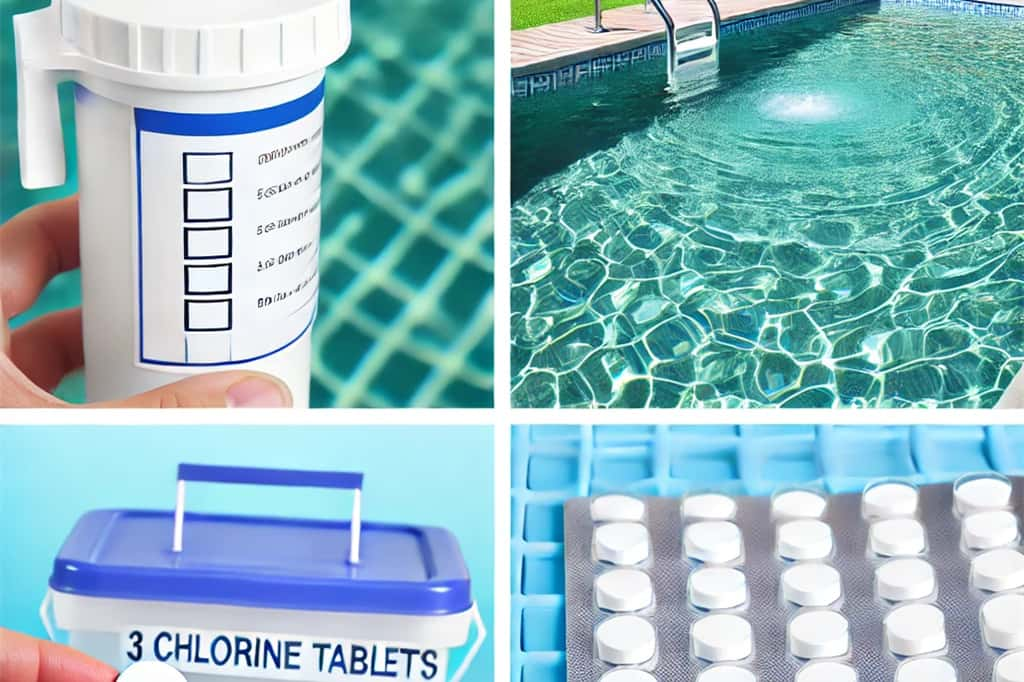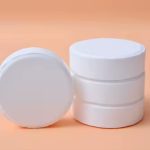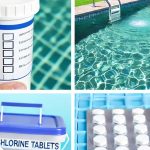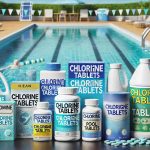Chlorine tablets are a convenient and effective way to maintain the cleanliness and safety of your swimming pool. These small but powerful tablets help keep pool water free from harmful bacteria, algae, and other contaminants. However, even the best chlorine tablets can sometimes cause problems if not used correctly. In this article, we’ll discuss common issues associated with chlorine tablets and provide practical solutions to fix them. Whether you’re using 3 inch chlorine tablets or smaller variants, understanding these issues will help you get the most out of your pool maintenance routine.

1. Uneven Dissolution
One common issue pool owners face is the uneven dissolution of chlorine tablets. This can happen if the tablets are placed directly in the pool or if the dispenser is not functioning properly. Uneven dissolution leads to inconsistent chlorine levels, which may result in cloudy water or algae growth.
How to Fix It:
Use a floating dispenser: Always place the tablets in a floating dispenser or an automatic chlorinator. This ensures that the tablets dissolve evenly and maintain consistent chlorine levels.
Check the dispenser regularly: Ensure that your floating dispenser or chlorinator is not clogged and is distributing chlorine evenly.
Stick to the right size: If you have a larger pool, 3 inch chlorine tablets are more suitable because they dissolve at a steady rate and cover a wider area.
2. Tablets Damaging Pool Surfaces
Placing chlorine tablets directly in your pool can lead to localized high chlorine levels, which may damage pool surfaces, such as plaster or vinyl liners. Over time, this can cause discoloration or deterioration.
How to Fix It:
Avoid direct placement: Never place tablets directly in the pool. Use a dispenser or skimmer basket to prevent direct contact with pool surfaces.
Opt for quality suppliers: Purchase high-quality tablets from a trusted chlorine tablets supplier to ensure that the product dissolves uniformly and doesn’t leave residue that can harm your pool.
3. Overchlorination
Adding too many chlorine tablets to your pool can lead to overchlorination. High chlorine levels can irritate the skin and eyes of swimmers and may also damage pool equipment.
How to Fix It:
Test water regularly: Use a pool testing kit to monitor chlorine levels. The ideal range is 1-3 ppm (parts per million).
Adjust dosage: Follow the manufacturer’s guidelines and adjust the number of 3 inch chlorine tablets based on your pool’s size and usage.
Dilution: If chlorine levels are too high, dilute the pool water by adding fresh water and retest until levels stabilize.
4. Tablets Not Dissolving Properly
Sometimes, chlorine tablets may not dissolve as expected. This issue is often caused by poor water circulation or a malfunctioning dispenser.
How to Fix It:
Check water circulation: Ensure your pool’s pump and filtration system are working properly. Poor circulation can prevent tablets from dissolving evenly.
Inspect the dispenser: A clogged or broken dispenser can hinder the proper dissolution of 3 inch chlorine tablets. Clean or replace the dispenser as needed.
Store tablets correctly: Improper storage can cause tablets to lose their effectiveness. Keep them in a cool, dry place away from moisture.
5. Strong Chlorine Odor
A strong chlorine smell is often mistaken for high chlorine levels, but it’s usually a sign of insufficient chlorine reacting with contaminants. This reaction produces chloramines, which cause the unpleasant odor.
How to Fix It:
Shock your pool: Perform a shock treatment to break down chloramines and restore balance to the pool water.
Maintain proper levels: Use high-quality tablets from a reputable chlorine tablets supplier and ensure you’re maintaining consistent chlorine levels to prevent the buildup of chloramines.
Ventilation: If your pool is indoors, ensure proper ventilation to prevent the buildup of strong odors.
6. Tablets Running Out Too Quickly
Pool owners may notice that their chlorine tablets run out faster than expected. This issue can occur due to incorrect usage, poor storage, or overly high water temperatures.
How to Fix It:
Monitor dosage: Use only the recommended number of 3 inch chlorine tablets for your pool size. Overloading dispensers can lead to faster consumption.
Protect from heat: Store tablets in a cool, dry place to preserve their effectiveness and longevity.
Cover your pool: High water temperatures can accelerate the dissolution of tablets. Using a pool cover helps regulate water temperature and slow down tablet usage.
7. Difficulty Finding the Right Tablets
With so many products on the market, it can be challenging to find the right chlorine tablets for your pool. Low-quality tablets may dissolve unevenly, leave residue, or fail to maintain proper chlorine levels.
How to Fix It:
Choose reputable suppliers: Always buy from a trusted chlorine tablets supplier to ensure you’re getting high-quality products.
Look for the right size: For most residential pools, 3 inch chlorine tablets are the standard choice due to their consistent dissolution rate and broad coverage.
Read reviews: Check customer reviews and ratings before purchasing to ensure you’re investing in a reliable product.
Conclusion
Chlorine tablets are a vital component of pool maintenance, but like any pool care product, they can present challenges if not used properly. By understanding common issues like uneven dissolution, overchlorination, or improper storage, you can take proactive steps to resolve these problems and ensure your pool stays clean and safe.
Partnering with a reputable chlorine tablets supplier is key to avoiding many of these issues and ensuring you get the best value for your investment. With the right approach, you can enjoy crystal-clear, hygienic pool water all season long.





